IRON AGE CELTIC GOLD CLOAK FASTENER 4th-1st century BC A gold clip formed as a recurved round-section bar with knop finial, ribbed lower section and transverse elliptical terminal with vertical lines. 8.95 grams, 37mm (1 1/2"). Extremely fine condition. Very rare. Provenance From an important Mayfair, London, UK collection, acquired from a London gallery, 1991; cat. 1704. Footnotes The style of this fastener is similar to gold examples found at Borek in the Czech Republic. The use of gold in the Celtic Iron Age was extremely popular and important among the elite members of society and denoted their position in it. Gold bracelets and neck torcs were the popular decorative items among the aristocracy and were imbued with sacred connotations. Gold cloak pins would have been an integral part of the regalia of Celtic nobility and would have added to the appearance of individuals among the people that they ruled. The Roman writer Dio Cassius describes the British queen Boudica as wearing gold ornaments and the rich princely burials from central Gaul, such as Vix in Burgundy, show the breadth and technical skills of the craftsmen of the time.
IRON AGE CELTIC GOLD CLOAK FASTENER 4th-1st century BC A gold clip formed as a recurved round-section bar with knop finial, ribbed lower section and transverse elliptical terminal with vertical lines. 8.95 grams, 37mm (1 1/2"). Extremely fine condition. Very rare. Provenance From an important Mayfair, London, UK collection, acquired from a London gallery, 1991; cat. 1704. Footnotes The style of this fastener is similar to gold examples found at Borek in the Czech Republic. The use of gold in the Celtic Iron Age was extremely popular and important among the elite members of society and denoted their position in it. Gold bracelets and neck torcs were the popular decorative items among the aristocracy and were imbued with sacred connotations. Gold cloak pins would have been an integral part of the regalia of Celtic nobility and would have added to the appearance of individuals among the people that they ruled. The Roman writer Dio Cassius describes the British queen Boudica as wearing gold ornaments and the rich princely burials from central Gaul, such as Vix in Burgundy, show the breadth and technical skills of the craftsmen of the time.
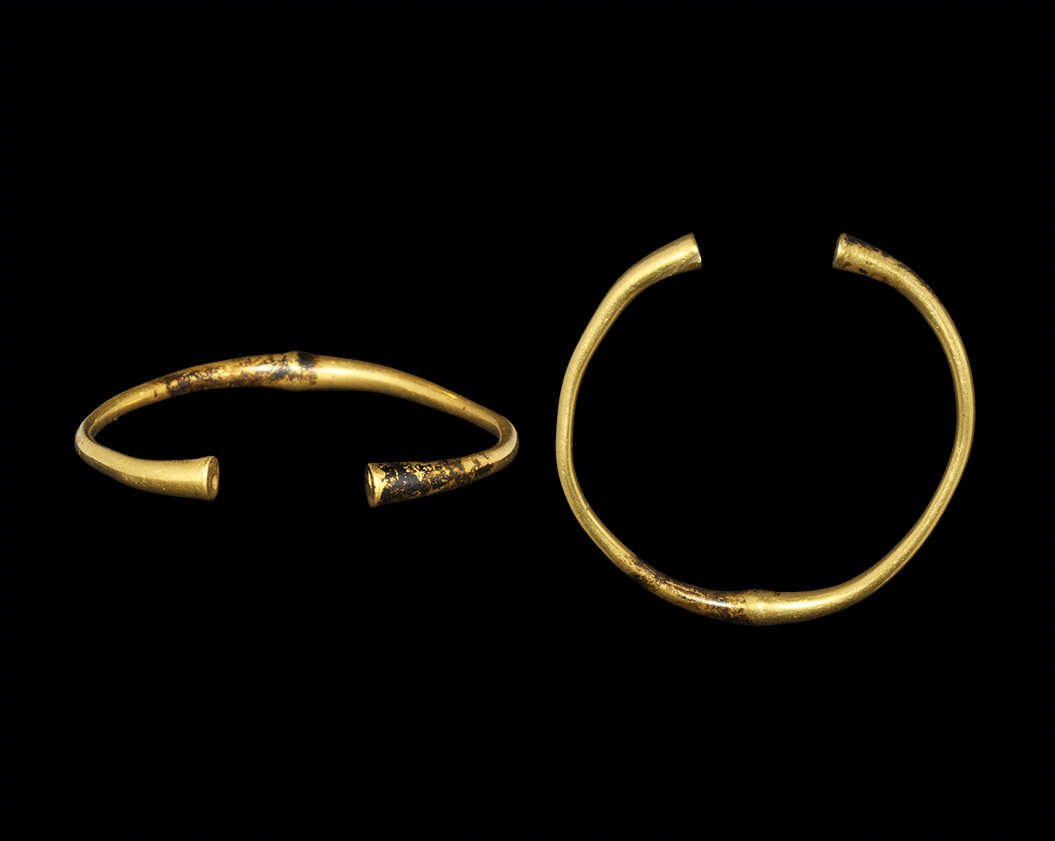

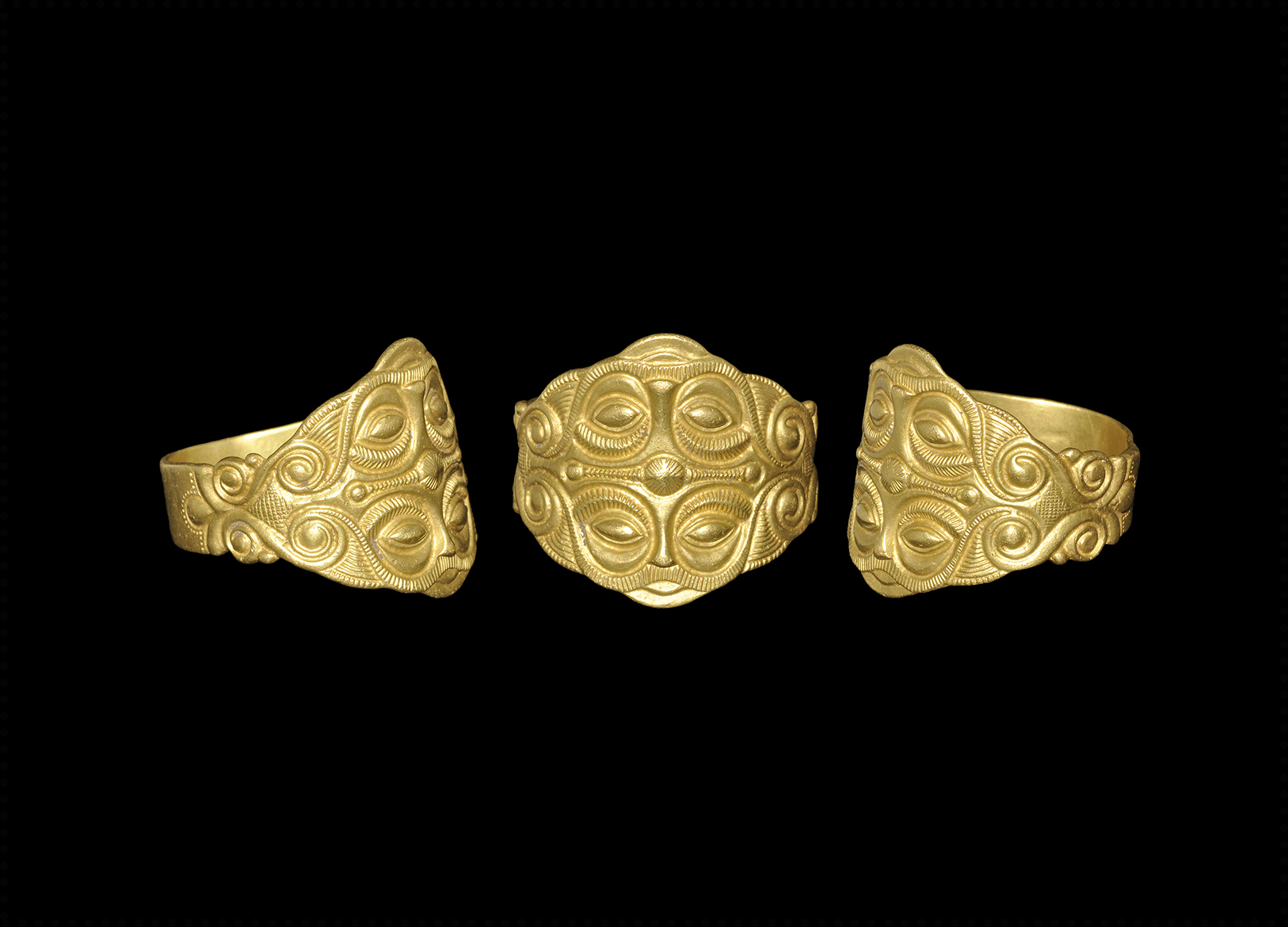

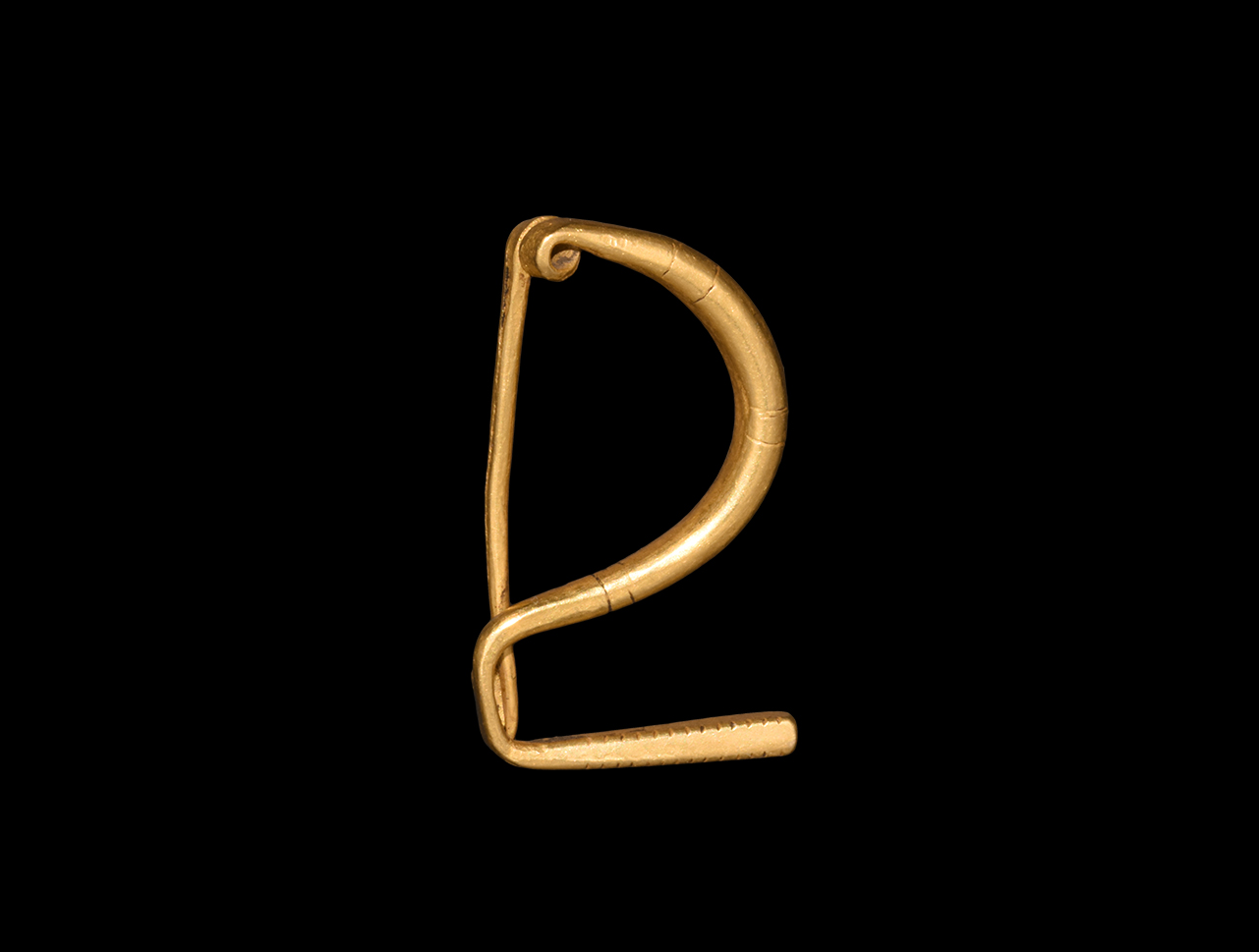
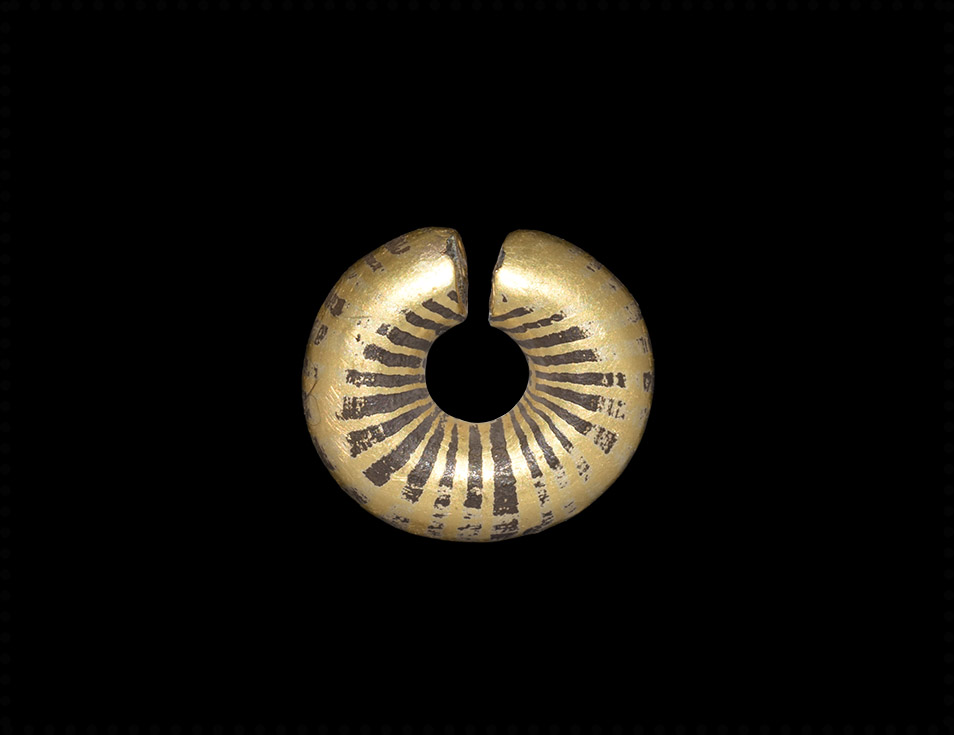
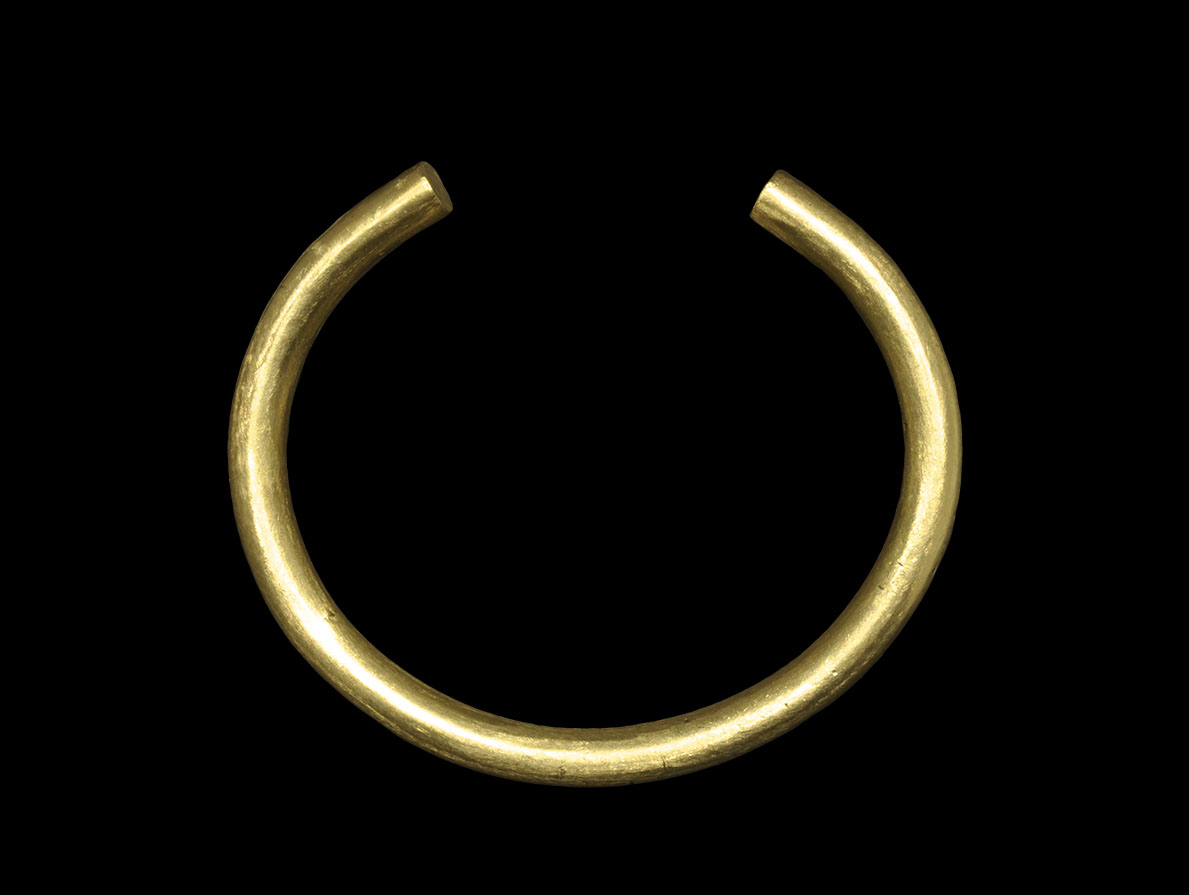
.jpg)
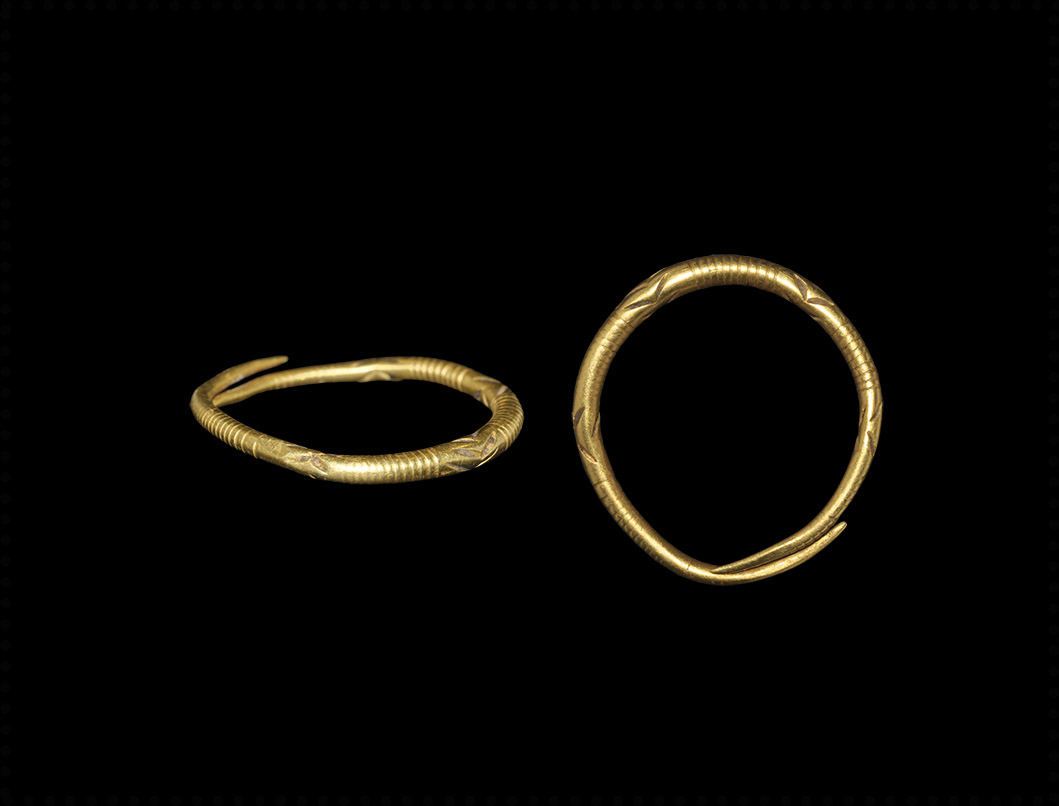
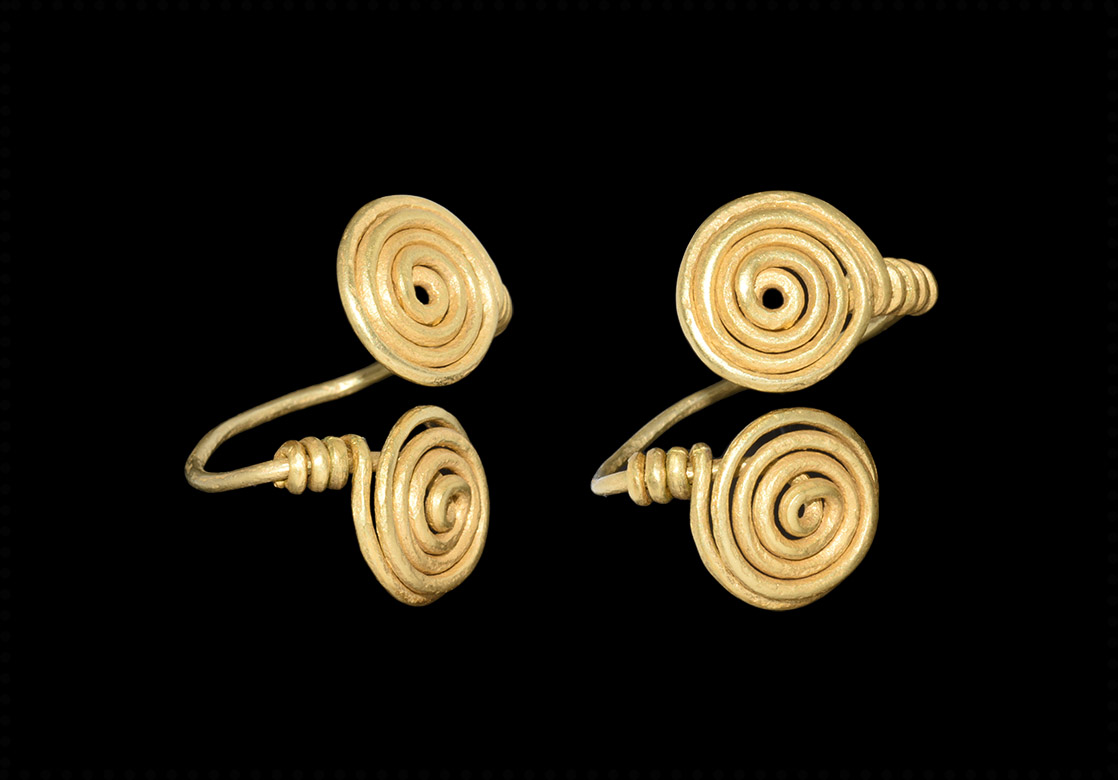

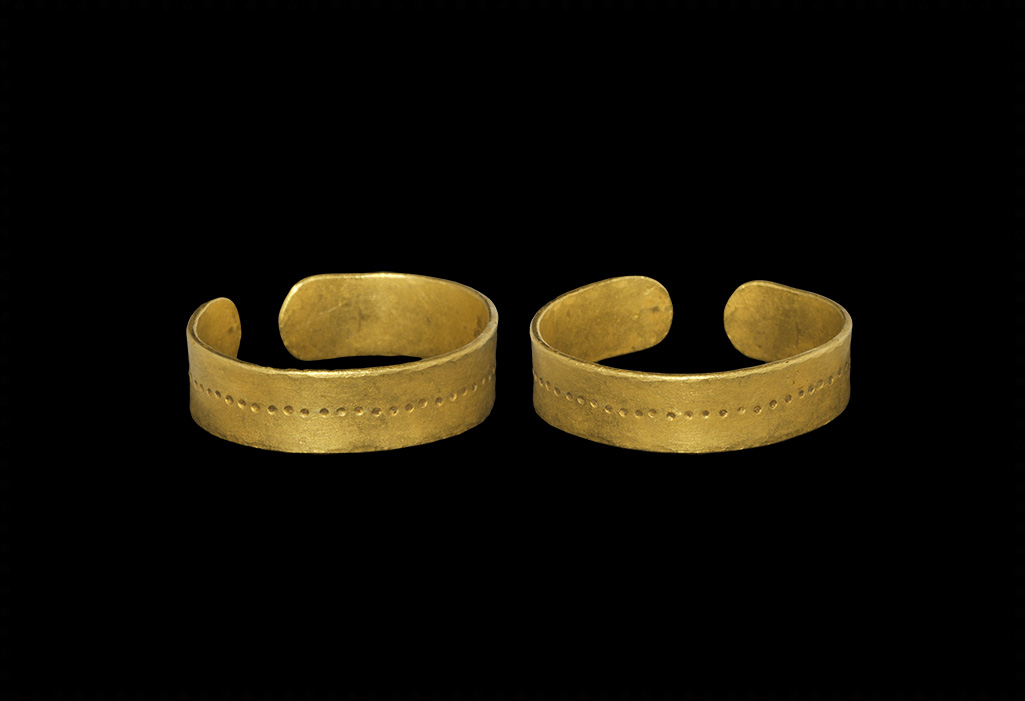
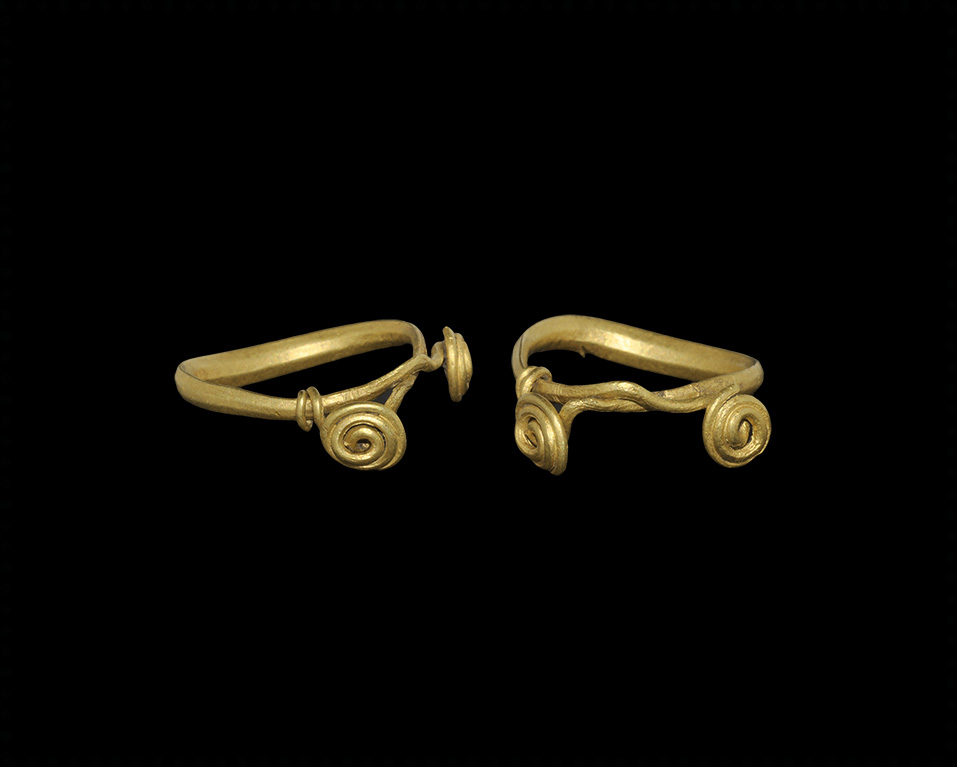
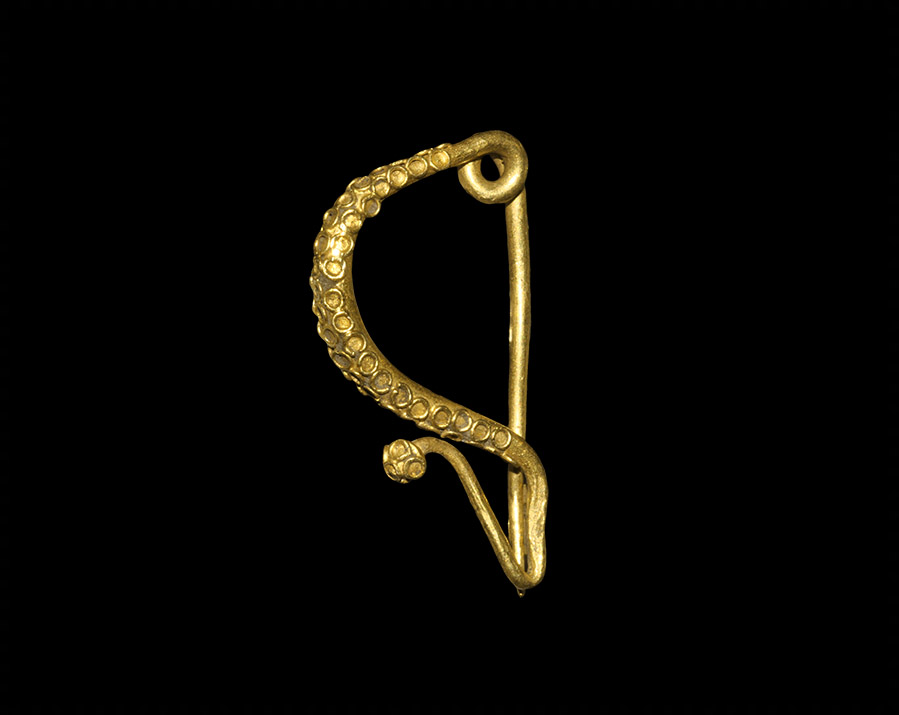
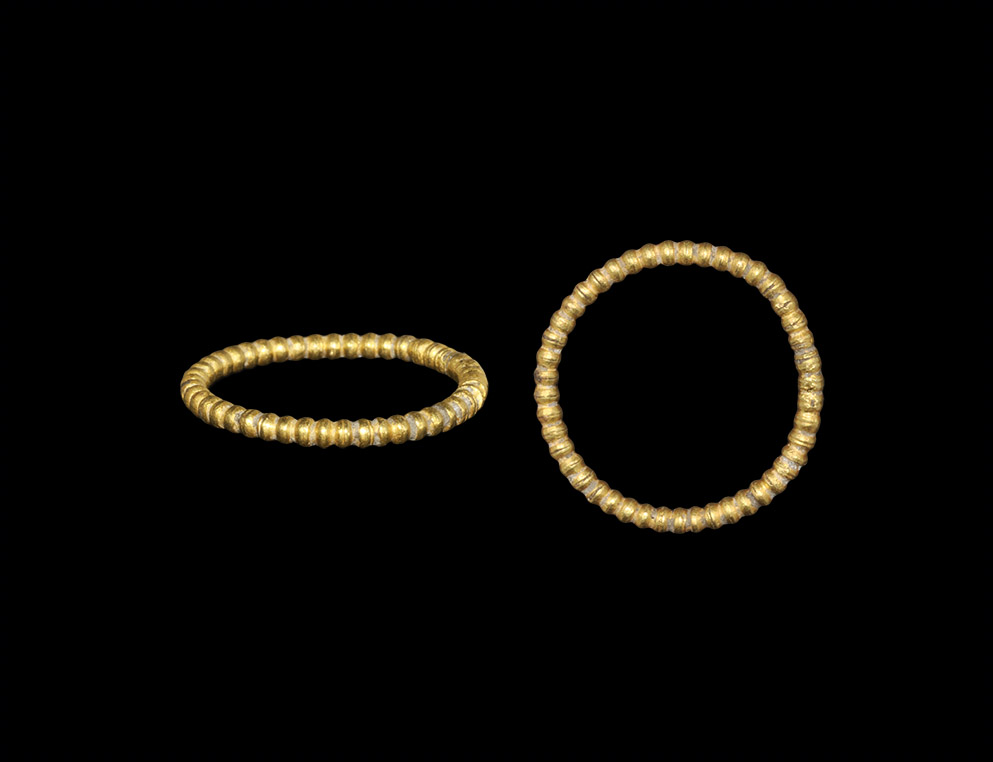
Testen Sie LotSearch und seine Premium-Features 7 Tage - ohne Kosten!
Lassen Sie sich automatisch über neue Objekte in kommenden Auktionen benachrichtigen.
Suchauftrag anlegen